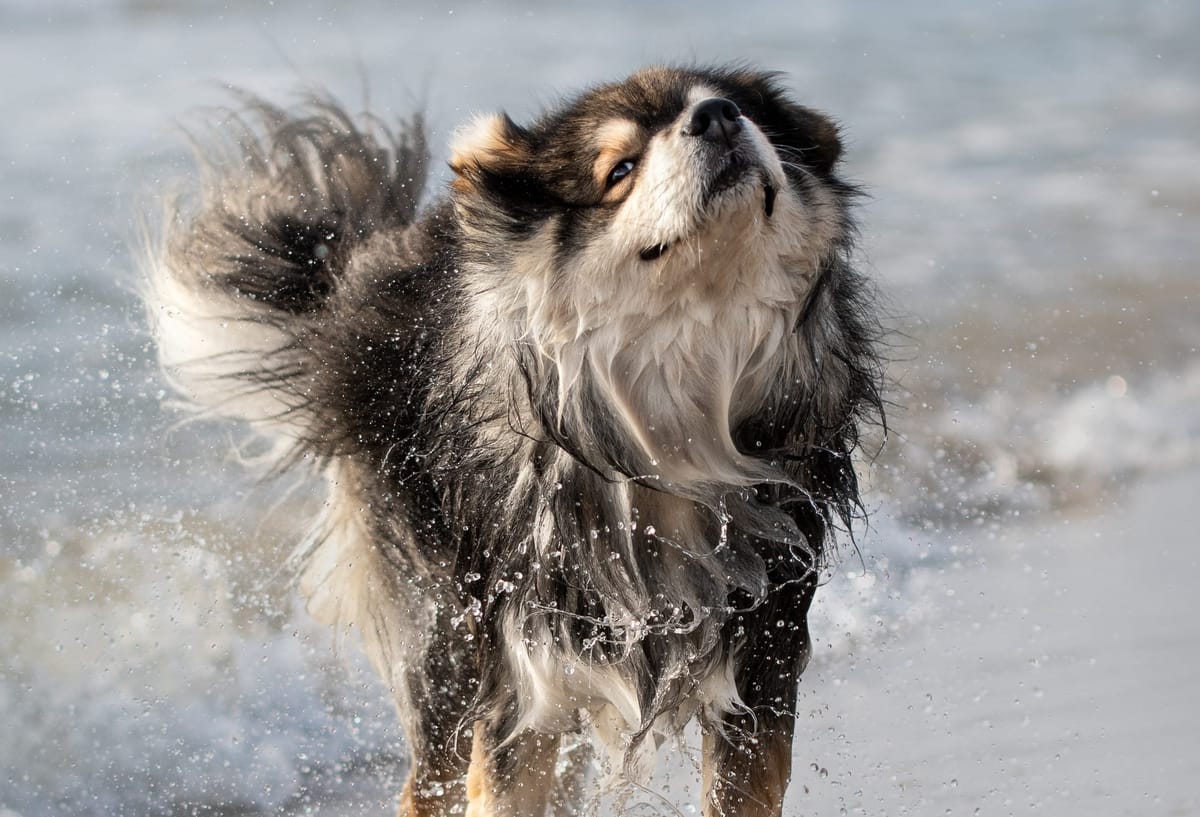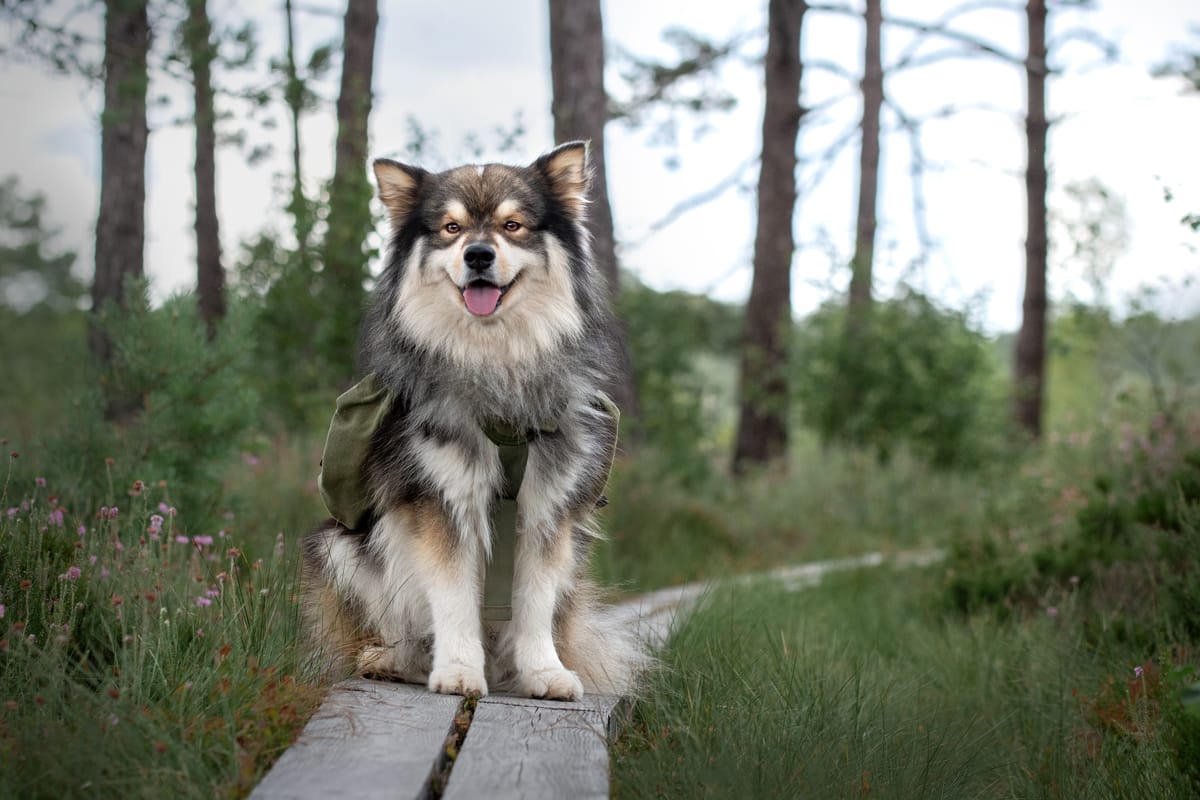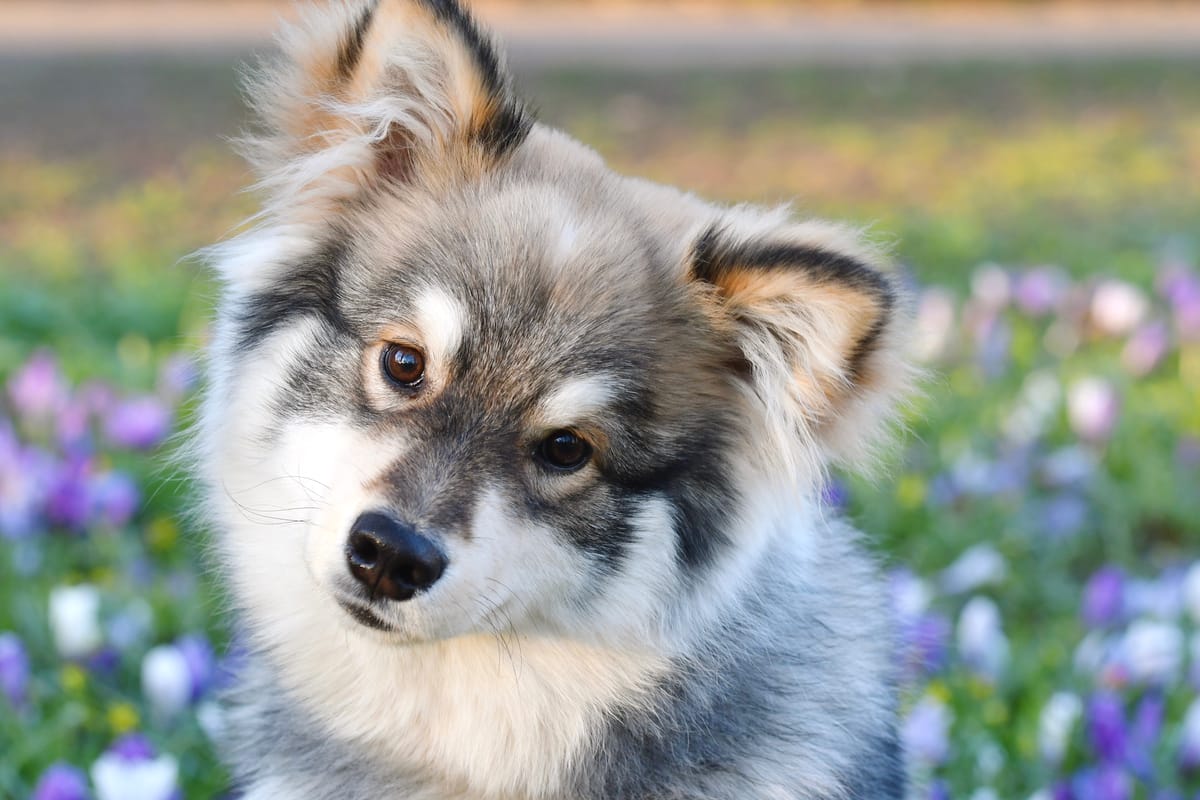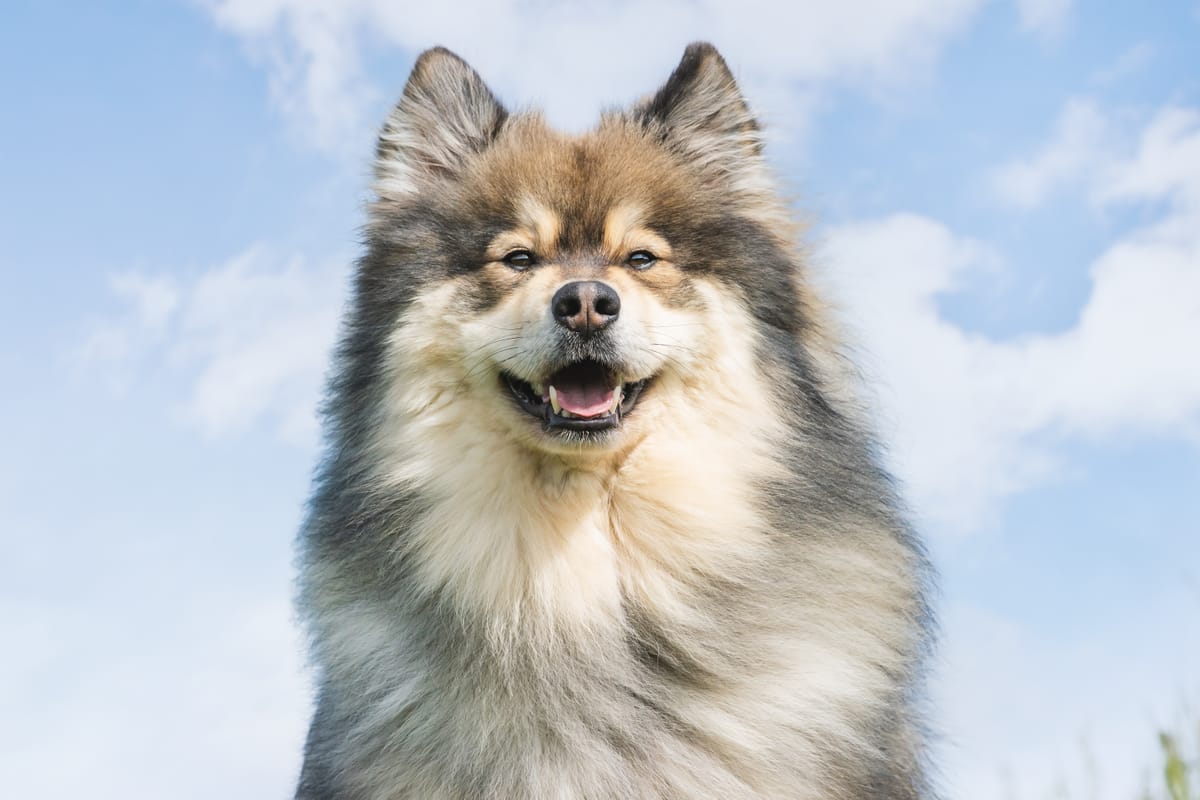Pomskies are a relatively new breed of dog that has gained popularity in recent years. These adorable pups are a cross between a Pomeranian and a Siberian Husky, resulting in a small to medium-sized dog with a fluffy coat and striking eyes. As with any new breed, many potential owners have questions about their temperament and compatibility with other pets, particularly cats.
While every dog is different, and there are no guarantees when it comes to animal behavior, many Pomsky owners report that their dogs get along well with cats. Some Pomskies have even been known to form close bonds with their feline housemates. However, it's important to note that introducing a new pet to your home should always be done carefully and with consideration for the individual personalities and needs of each animal.
Pomsky Temperament and Cat Compatibility
Inherent Traits
Pomskies are a hybrid breed that results from crossing a Pomeranian with a Siberian Husky. As a result, they inherit traits from both breeds. Pomskies are known for their high energy levels, intelligence, and affectionate nature. However, they can also be stubborn and independent.
On the other hand, cats are known for their independent nature. They are territorial animals and can be quite possessive of their space. They are also known for their agility and quick reflexes.
Socialization Impact
The temperament of a Pomsky towards cats largely depends on their socialization experience. If a Pomsky is introduced to cats at an early age, they are more likely to be accepting of them. However, if they are not socialized properly, they may view cats as prey and chase after them.
It is important to note that even if a Pomsky is socialized with cats, they may still exhibit some degree of prey drive. Therefore, it is important to supervise their interactions and provide a safe environment for both animals.
Overall, Pomskies can be compatible with cats if they are socialized properly and given the right environment. However, it is important to remember that each animal has their unique personality and temperament, and compatibility cannot be guaranteed.
Introducing Pomskies to Cats
Pomskies are known for their friendly and playful nature, but introducing them to cats can be a bit tricky.
Before introducing a Pomsky to a cat, it is important to make sure that both animals are comfortable and safe. Here are some preparation steps to follow:
- Ensure that both animals are up-to-date on their vaccinations and have no health issues.
- Create separate spaces for each animal, such as a separate room or area, to allow them to get used to each other's scent.
- Provide plenty of toys, food, water, and litter boxes for each animal.
Supervised Interactions
When introducing a Pomsky to a cat, it is important to supervise their interactions closely. Here are some tips to keep in mind:
- Keep the Pomsky on a leash or in a crate to prevent any aggressive behavior.
- Allow the cat to approach the Pomsky at its own pace.
- Reward both animals for positive behavior, such as playing nicely or showing curiosity.
Ongoing Monitoring
Even after the initial introduction, it is important to continue monitoring the relationship between Pomsky and the cat. Here are some things to keep in mind:
- Never leave the Pomsky and cat alone together until you are confident that they can get along.
- Watch for any signs of aggression or discomfort from either animal, such as hissing, growling, or hiding.
- Be patient and give both animals time to adjust to each other's presence.
By following these tips, you can help ensure a positive relationship between your Pomsky and cat.
Living Conditions for Pomskies and Cats
Space Requirements
When it comes to living with cats, Pomskies can be a good fit, but it's important to consider their personalities and tendencies. In terms of space requirements, both cats and Pomskies can adapt to living in apartments or smaller homes, as long as they have enough room to move around and play.
Pomskies are generally active dogs, so it's important to provide them with enough space to run and play. It's also important to provide them with a safe and secure space, as they can be prone to escaping if they feel bored or anxious.
Cats, on the other hand, are generally more independent and can be content with smaller spaces as long as they have access to vertical spaces and scratching posts.
Resource Management
When it comes to resource management, it's important to provide separate resources for both cats and Pomskies. This includes separate food and water bowls, litter boxes, and sleeping areas.
Pomskies can be curious and may try to investigate the litter box, so it's important to keep it in a separate area or use a covered litter box. It's also important to supervise interactions between cats and Pomskies to ensure that both pets are safe and comfortable.
Overall, with proper training and management, Pomskies can coexist peacefully with cats in the same household. It's important to provide enough space and resources for both pets to ensure their comfort and well-being.
Training Pomskies for Cohabitation with Cats
Positive Reinforcement
Pomskies are intelligent and eager to please dogs, which makes them highly trainable. Positive reinforcement is an effective training method that involves rewarding good behavior with treats, praise, or playtime. When training a Pomsky to cohabitate with cats, it is important to use positive reinforcement to encourage desirable behavior.
For example, if the Pomsky approaches the cat calmly and without aggression, give them a treat and praise them. This will reinforce the behavior and encourage them to continue positively approaching the cat.
Boundary Setting
Setting boundaries is another important aspect of training Pomskies to cohabitate with cats. It is important to establish clear boundaries for both the Pomsky and the cat to prevent any unwanted behavior.
For example, if the Pomsky tries to chase the cat, firmly say "no" and redirect their attention to a toy or treat. This will teach Pomsky that chasing the cat is not acceptable behavior.
It is also important to provide the cat with a safe space where they can retreat if they feel uncomfortable or threatened by the Pomsky. This can be a separate room or a high perch that the Pomsky cannot reach.
By using positive reinforcement and setting clear boundaries, Pomskies can learn to cohabitate peacefully with cats. However, it is important to remember that every dog and cat is unique, and some may require more time and patience than others.
Potential Challenges in Pomsky-Cat Relationships
Predatory Drive
As a result of their wolf-like ancestry, Pomskies have a natural predatory drive. This instinct can cause problems when they are introduced to cats in the household. In some cases, Pomskies may view cats as prey and chase them around the house. This behavior can be dangerous for both the cat and the Pomsky, as it can lead to injury or even death.
To prevent this behavior, it is important to introduce the Pomsky and the cat slowly and under close supervision. It is also recommended to train the Pomsky to respond to commands such as "leave it" or "no" to prevent them from chasing or attacking the cat.
Jealousy and Territorial Behavior
Pomskies can also exhibit jealousy and territorial behavior towards other pets in the household, including cats. They may become possessive of their toys, food, and sleeping areas, and may react aggressively if another pet tries to approach or use these items.
To prevent this behavior, it is important to establish clear boundaries and rules for all pets in the household. This can include feeding them in separate areas, providing separate sleeping areas, and monitoring their interactions closely. It is also important to provide plenty of attention and affection to all pets to prevent feelings of jealousy or neglect.
Health and Safety Considerations
Proper Grooming
Pomskies require regular grooming to maintain their coat's health and appearance. Regular brushing helps to prevent matting, which can lead to skin irritation and discomfort. It is important to use a soft-bristled brush and to be gentle when grooming a Pomsky, as their coat is delicate. Additionally, trimming their nails regularly is essential to avoid overgrowth, which can cause discomfort and even lead to infection.
Veterinary Care
Regular veterinary check-ups are essential to maintain the Pomsky's health. Pomskies are generally healthy dogs, but they can be prone to certain health issues such as hip dysplasia and eye problems. It is important to keep up with their vaccinations, as well as to have them dewormed regularly to prevent parasites. In addition, it is recommended to have your Pomsky spayed or neutered to prevent unwanted pregnancies and reduce the risk of certain types of cancer.
Overall, proper grooming and regular veterinary care are essential to keep your Pomsky healthy and happy. By following these guidelines, you can ensure that your Pomsky is well-cared for and can live a long and healthy life.
Conclusion
In conclusion, addressing the question "Are Pomsky Good with Cats?" requires consideration of individual temperament and proper introductions. Pomskies, with their unique blend of Pomeranian and Siberian Husky traits, can vary in their interactions with cats. While some Pomskies may naturally get along with feline companions, others may require gradual introductions and positive reinforcement to foster a harmonious relationship.
The key to successful cohabitation lies in early socialization and supervised interactions between Pomskies and cats. Owners can play a crucial role in facilitating positive encounters, allowing both pets to become familiar with each other's presence and behavior. Patience, consistent training, and providing a safe space for each pet contribute to a successful multi-pet household.
Individual personalities and experiences play a significant role in determining the compatibility between Pomskies and cats. By understanding and respecting the needs of both pets, owners can create an environment where Pomskies and cats can thrive together, fostering a peaceful and enjoyable companionship. Are Pomsky Good with Cats? With proper introductions and care, they can indeed form positive bonds with their feline counterparts
Frequently Asked Questions (FAQs)
- Are Pomskies good with cats?
- Pomskies are generally good with cats, but it depends on the individual dog's temperament and the cat's personality. Some Pomskies may have a high prey drive and may see a cat as something to chase and hunt. In contrast, other Pomskies may be more laid back and may get along well with cats.
- How can you introduce a Pomsky to a cat?
- It's essential to introduce a Pomsky to a cat slowly and carefully. Start by allowing the animals to smell each other through a closed door. Once they seem comfortable with each other's scent, you can allow them to interact while supervised. It's also important to give each animal their space and ensure that they have separate areas to eat, sleep, and play.
- Can a Pomsky and a cat be left alone together?
- It's generally not recommended to leave a Pomsky and a cat alone together, especially in the beginning. Until you are confident that they get along well and won't harm each other, it's best to supervise their interactions and keep them separated when you're not around.
- What if my Pomsky doesn't get along with my cat?
- If your Pomsky and cat don't get along, it's essential to keep them separated to prevent any harm to either animal. You can try reintroducing them slowly and carefully, but if they still don't get along, it may be best to keep them separated permanently. It's important to prioritize the safety and well-being of both animals.
- If your Pomsky and cat don't get along, it's essential to keep them separated to prevent any harm to either animal. You can try reintroducing them slowly and carefully, but if they still don't get along, it may be best to keep them separated permanently. It's important to prioritize the safety and well-being of both animals.
More Pomsky articles:




